We Research: Monitoring and Effectiveness of Wetland’s Nature-Based Stormwater Solution
In order to improve stormwater treatment and management, seven pilots are built as part of the MUSTBE project in four central Baltic countries – Estonia, Finland, Sweden and Latvia. The solutions aim to improve stormwater treatment and management by combining nature-based stormwater solutions with digital solutions. One of the project’s pilot solutions, a wetland in Lotskeri, Pori, was completed in late 2024 and has progressed to the next phase, monitoring of the solution’s effectiveness.
The Pori wetland is located on acid sulphate soils – acid sulphate soils cause environmental problems when the soil is exposed to oxygen, for example through drainage or construction. As a result, a chain of chemical and biological reactions is triggered, leading to the acidification of the soil and metals naturally occurring in the soil beginning to dissolve into the surrounding terrain. The dissolved metals are then washed away with runoff water into receiving water bodies. The wetland pilot solution has attempted to solve the problems caused by acid sulphate soils by building biochar, limestone and stone dams, the purpose of which is to neutralise the acidic water flowing in the wetland, bind metals and pollutants and delay the flow of water.
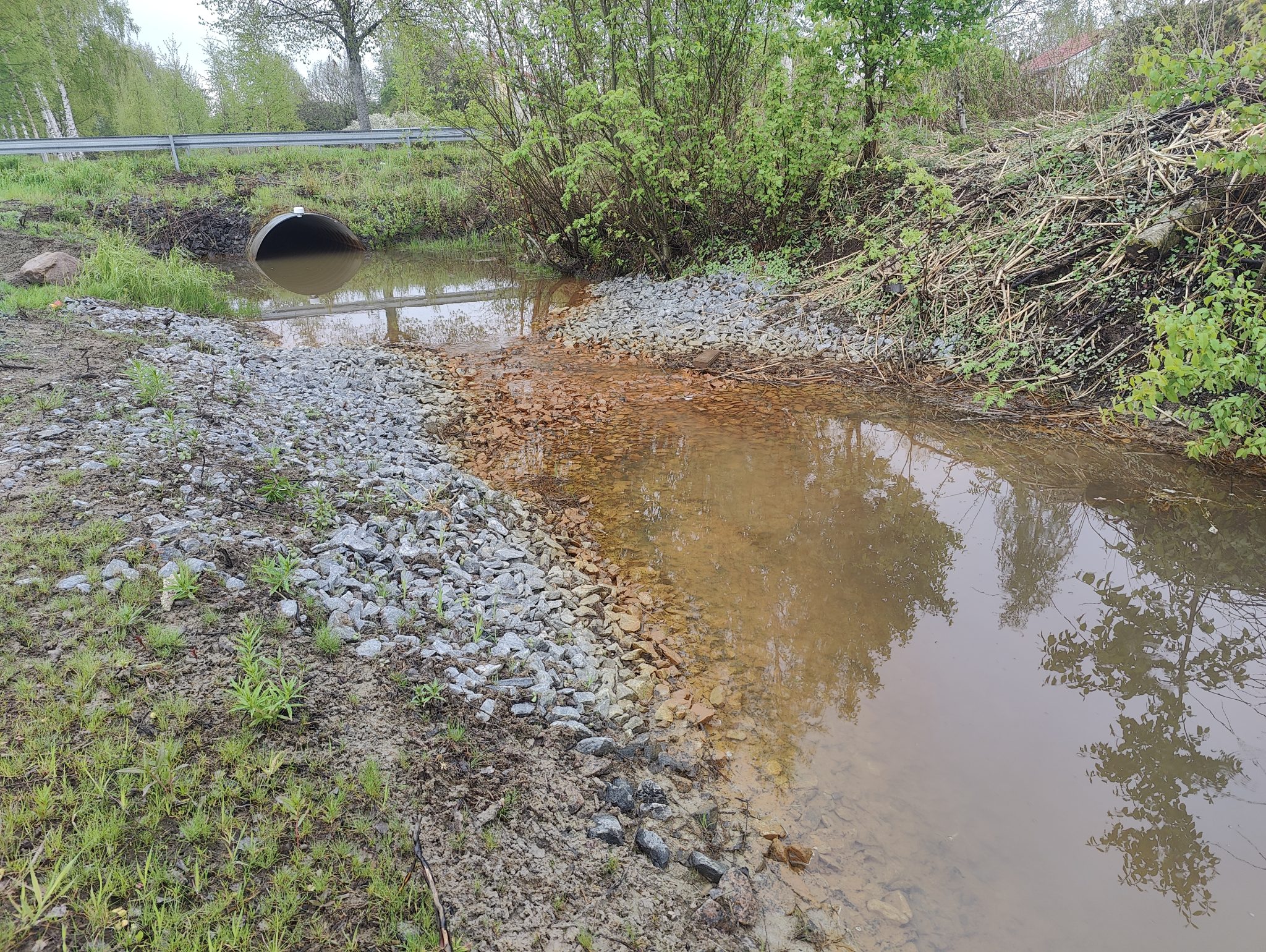
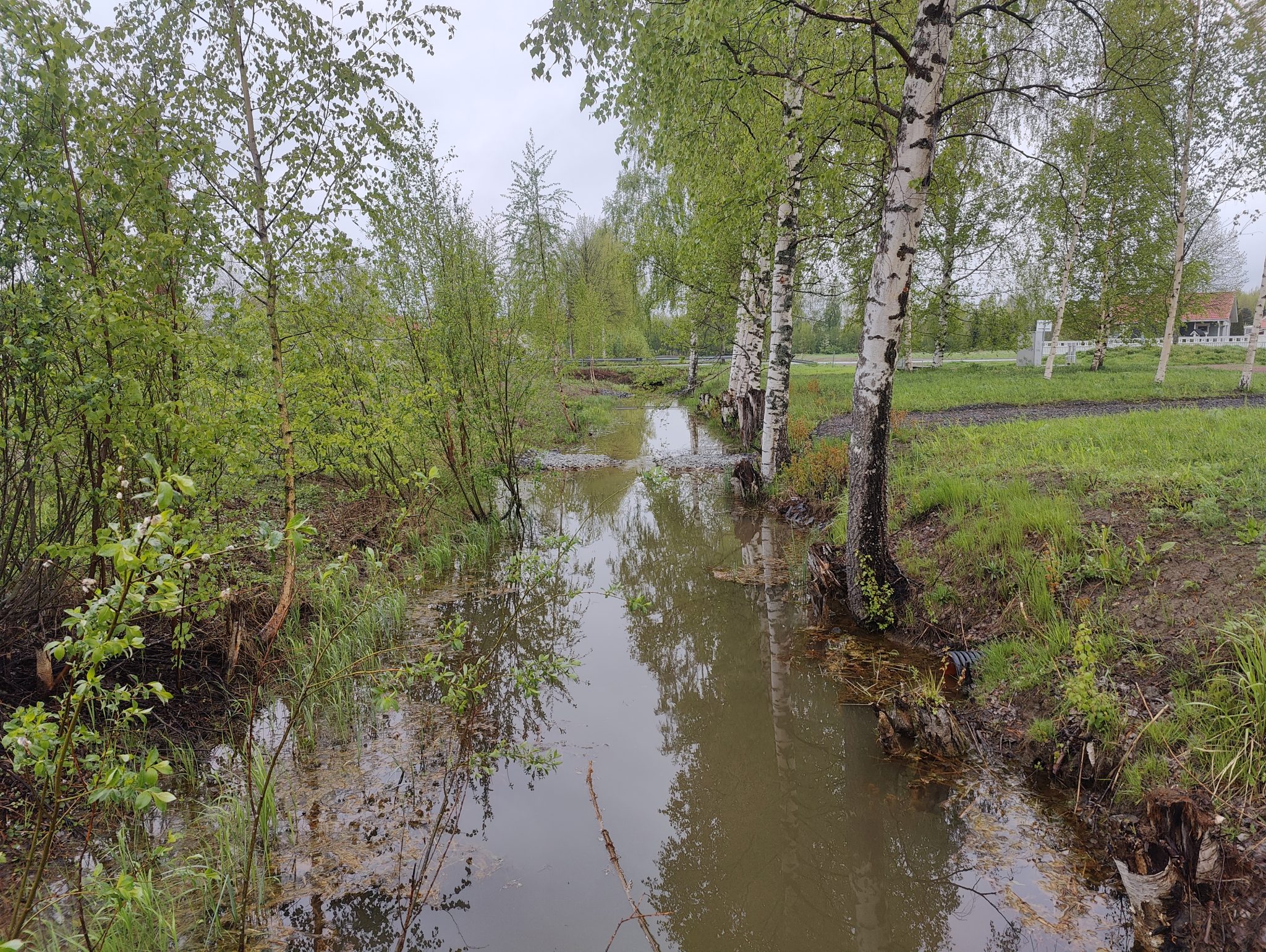
The key to the wetland's nature-based solution is the filtration dams to purify and neutralize water. The first image shows the wetland's limestone and pumice dam, the second image shows two biochar and gravel dams. (Photos: Meri-Maaria Salo)
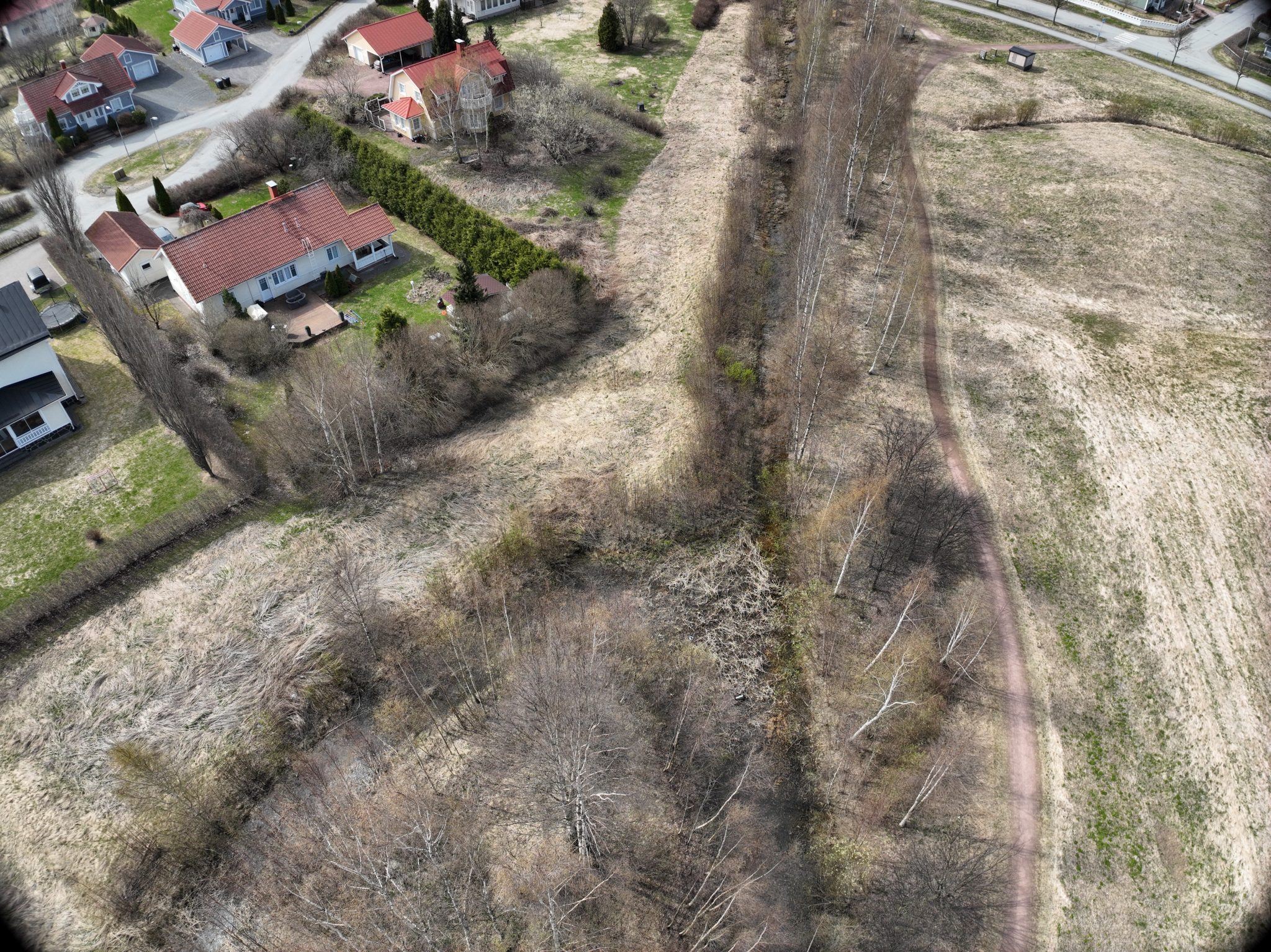
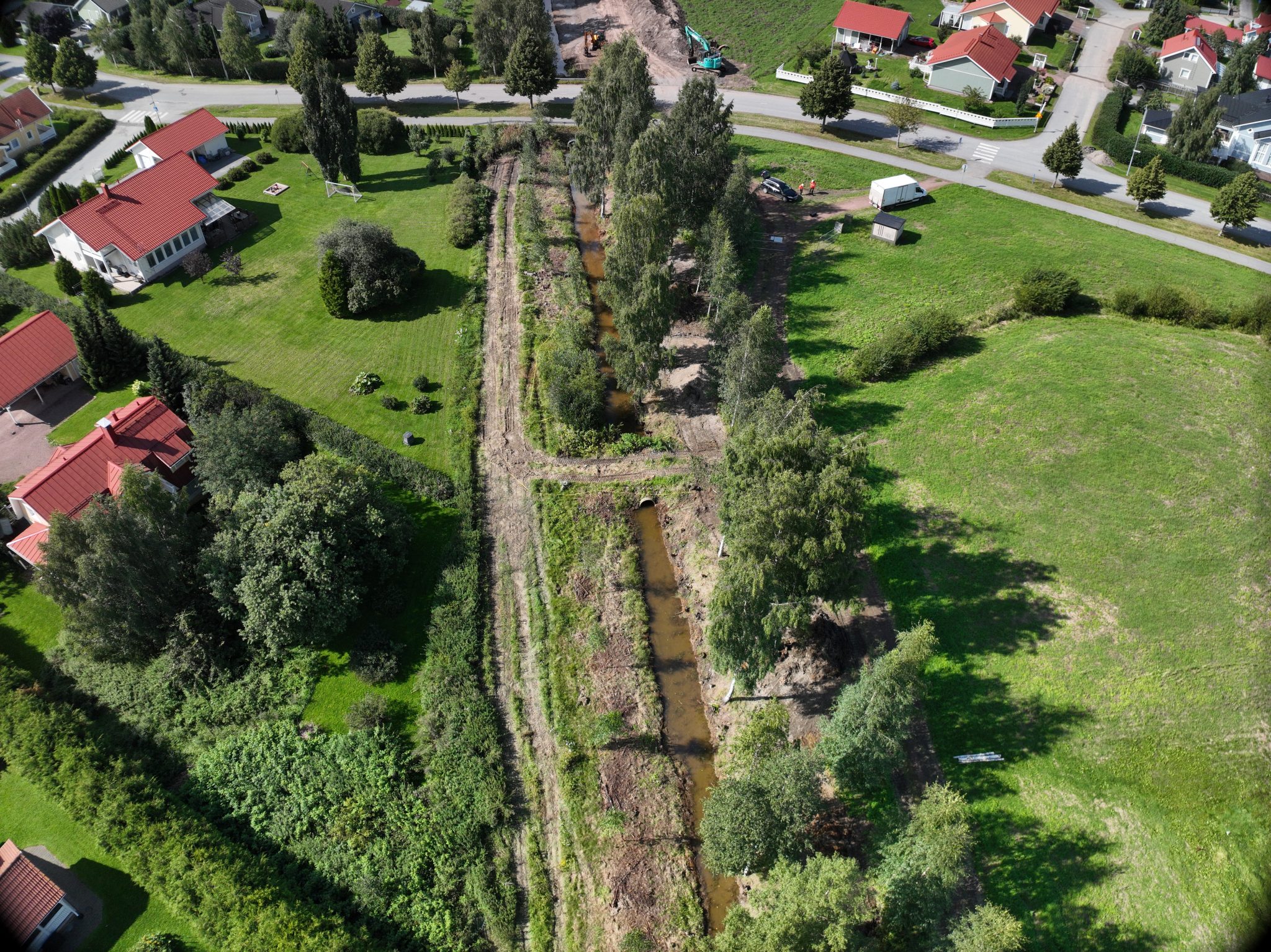
Wetland before and after restoration. After the finished solution, the wetland has a permanently higher water level thanks to the dams – previously the water level was very low or non-existent, sometimes leading to odor nuisance in the area. (Photos: Aleksi Siirtola)
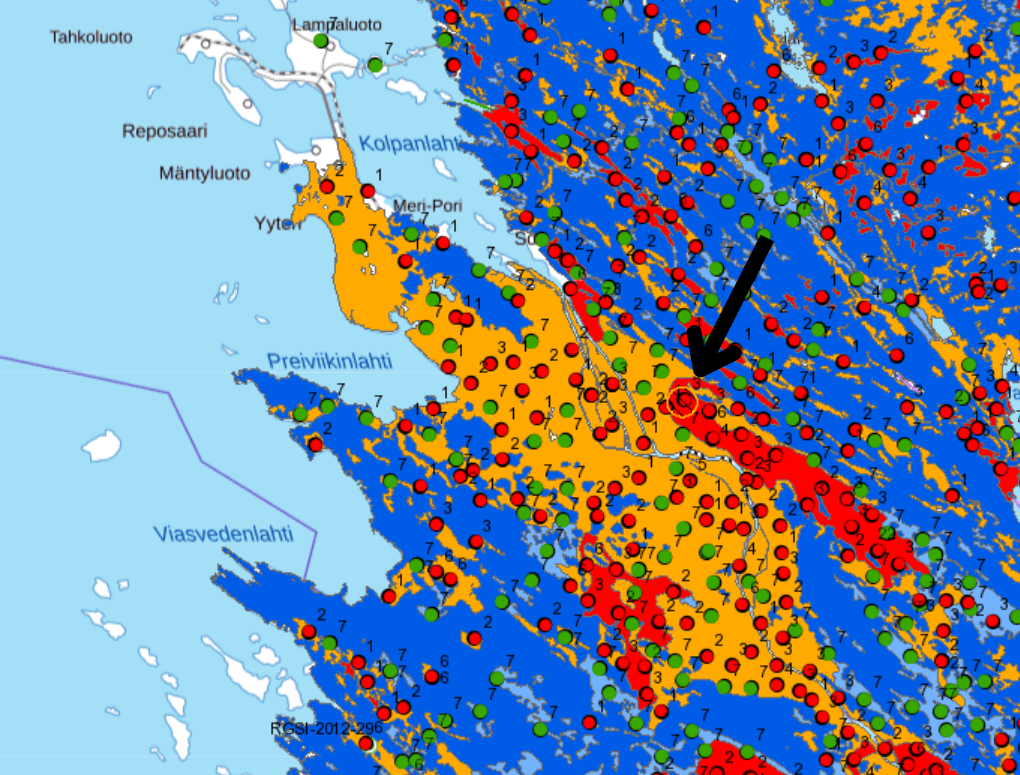
Acid sulphate soils in Finland. The Pori Lotskeri wetland marked on the map is in the red area, which means that there have been particularly many observations of acid sulphate soils in the area. Photo: Geological Survey of Finland, 2025.
Preliminary Results, Successes and Challenges
The effectiveness of the wetland has been monitored in different ways during the current year, such as with traditional water sampling and continuous measuring devices. Pilot visits have also been important, during which the condition of the dams and the effectiveness of the solution have been monitored visually. The monitoring of the effectiveness is based on the nutrient and harmful substance reduction targets defined at the beginning of the project, the implementation of which will be monitored throughout the project. Since the wetland is located on acid sulphate soils, the focus of the monitoring has been on the metal concentrations and pH of the water. The amount of nitrogen and solids has also been actively measured.
The goal of the wetland solution is to reduce solids by 60%, nitrogen by 40%, metals by 40% and increase the pH of the water by 0.5 units compared to the baseline.
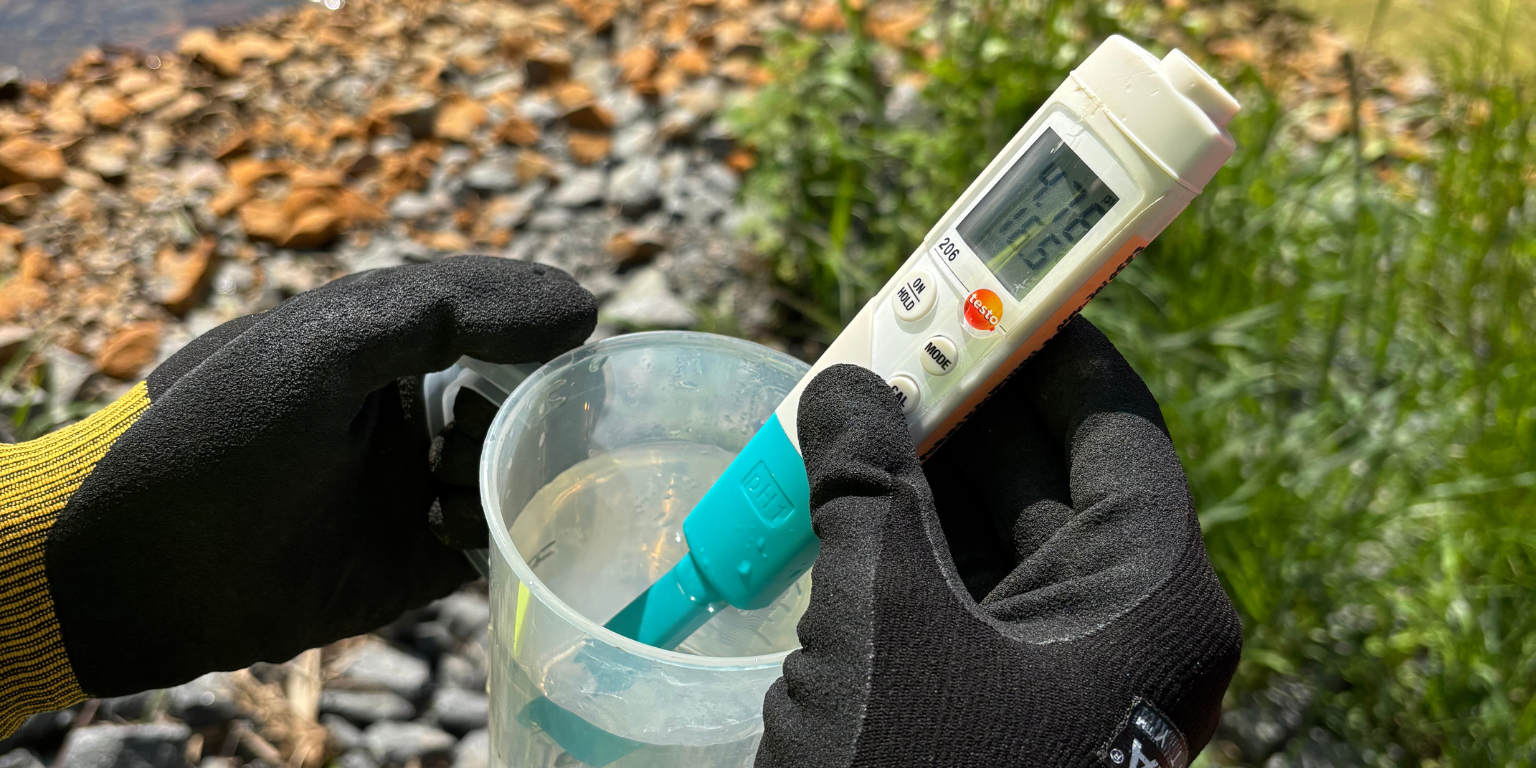
The pH of the water, the level of the perched groundwater, and the flow of the water, among other things, are continuously monitored at the wetland. In addition, information on rainfall is obtained from a nearby weather station. The pH measurements of the water are also periodically monitored using the hand-held meter shown in the picture. (Photo: Veera Iisakkala)
The dams and the retention basin in the wetland have proven to be effective in treating the water, especially in the reduction of suspended solids, where clear results have been achieved. The biggest challenge has been the excessive acidity of the water, which is difficult to neutralise, and which weakens the retention of metals dissolved in the water. The neutralisation process is particularly complicated by the surrounding residential area’s drainage water and stormwater which are directed into the middle of the wetland. Results from the effectiveness of the wetland solution will be ready by the end of the project in 2026.
The pilot solutions of the MUSTBE project aim to achieve not only better water quality and management, but also other benefits, such as increasing the recreational value and biodiversity of the area. The wetland pilot solution not only supports environmental protection goals but also increases the functionality and amenity of the area and maintains the city’s green corridors.
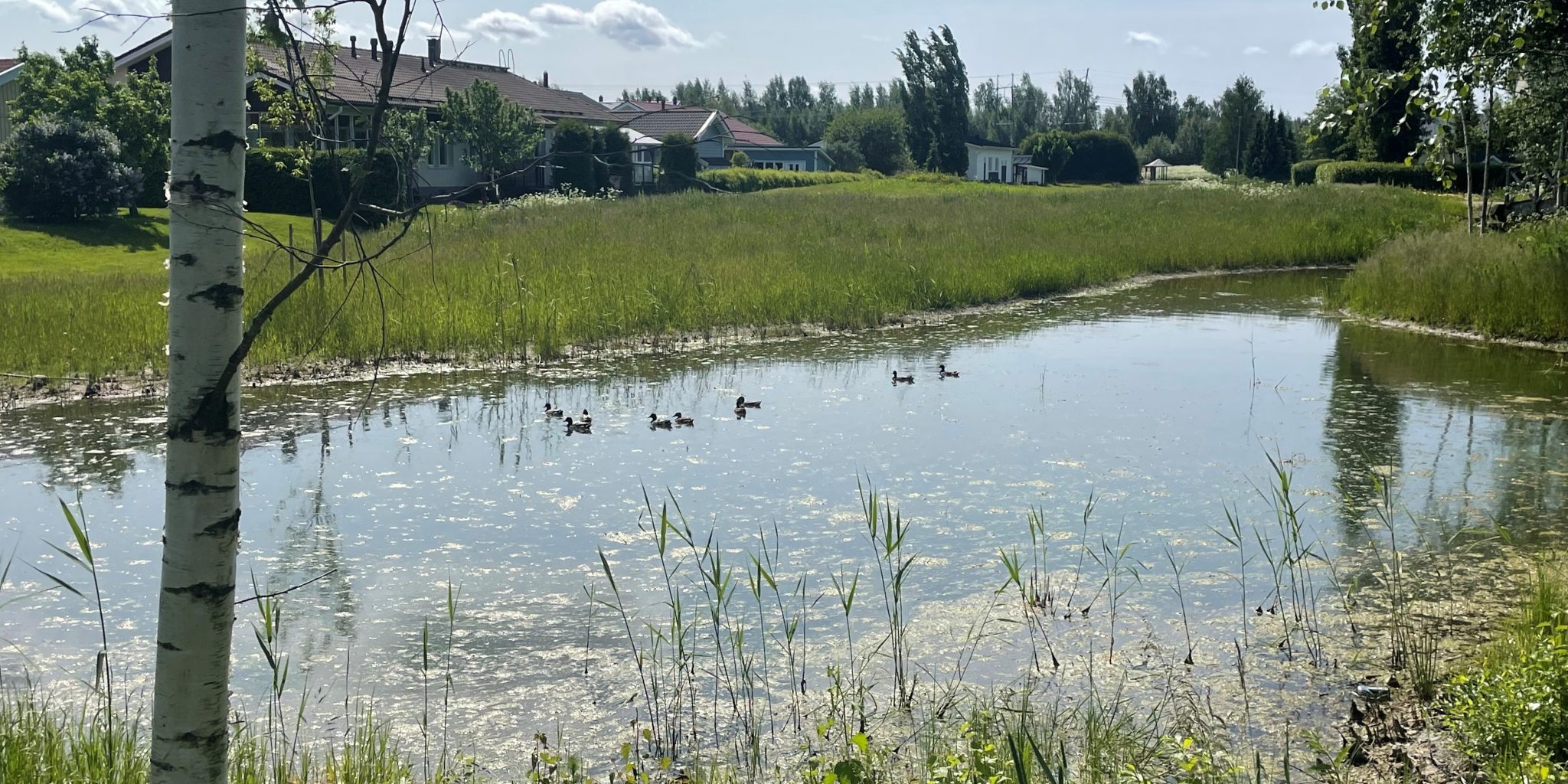
Nature-based stormwater solutions are intended to serve both nature and people. The picture shows a settling basin at the beginning of the wetland – as the dams slow down the flow of water, the suspended solids contained in it settle to the bottom. (Photo: Veera Seikkula)
Wetland Pilot Solution as Part of a Larger Whole
The Lotskeri wetland supports the central objective of the MUSTBE project in developing nature-based solutions combined with digital solutions, which can help reduce the pollution and nutrient load on the Baltic Sea and increase awareness among various stakeholders about the importance of stormwater management and treatment prevention. The wetland solution also aims to increase awareness of the problems caused by acid sulphate soils and the importance of their prevention. In order to protect the ecological state of water bodies, it is important that acid sulphate soils are increasingly considered in both local land use and national legislation.
As climate change progresses and extreme weather events become more common, nature-based solutions are key to developing the resilience of urban environments. A manual of solutions on the Lotskeri wetland and other MUSTBE pilot solutions will be published in late 2025, enabling wider application and adoption of the solutions.
Did you know?
- The majority of the nutrient load on the Baltic Sea originates from inland sources, such as agricultural runoff and stormwater.
- Nature-based solutions are easily applicable and can be adapted to meet a wide range of challenges.
- Finland is home to the largest areas of acid sulphate soils in Europe (Geological Survey of Finland, 2022).
- Acidic and metal-rich runoff from acid sulphate soils can cause significant impacts on water bodies and ecosystems, such as fish deaths (Ministry of the Environment, 2022).
- MUSTBE (Multidimensional stormwater treatment in urban areas for cleaner Baltic Sea) is a project co-financed by Interreg Central Baltic -programme for 1.5.2023-30.4.2026.
Sources:
Geological Survey of Finland. (2025). Acid sulphate soils. https://gtkdata.gtk.fi/hasu/
Geological Survey of Finland. (1.7.2022). From general survey to risk management – acid sulphate soils are Finland’s most persistent environmental problem, but research can mitigate the harms they cause. GTK. https://www.gtk.fi/en/current/from-a-general-survey-to-risk-management-acid-sulfate-soils-are-finlands-most-persistent-environmental-problem-but-research-can-mitigate-the-harms-they-cause/
Ministry of the Environment. (2022). National guide on acid sulphate soils for construction projects. https://julkaisut.valtioneuvosto.fi/bitstream/handle/10024/163782/YM_2022_3.pdf?sequence=1&isAllowed=y
